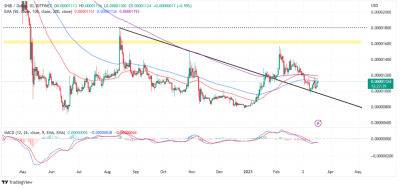Binance Coin (BNB) Price Prediction 2025-2030: Is BNB really immune from Silvergate crisis?
Disclaimer: The datasets shared in the following article have been compiled from a set of online resources and do not reflect AMBCrypto’s own research on the subject.
Binance Coin, also known as BNB, was first launched in 2017 as part of Binance’s initial coin offering (ICO). The goal of the ICO was to raise funds for the development of the Binance platform and exchange system, as well as for branding, marketing, and education for new innovators in the industry. The ICO was successful, with Binance raising $15 million in Bitcoin and Ethereum from the sale of 100 million BNB tokens.
Initially, Binance Coin was an ERC-20 token built on the Ethereum blockchain. It was designed as a reward mechanism for those who helped bring Binance to the public, and it also entitled users to lower trading fees. However, in 2019, Binance launched its own blockchain, known as the Binance Chain. This new blockchain is smart contract-enabled and powered by BNB, its native token.
Owning BNB on the Binance Chain grants users access to exclusive token sales and a reduction in trading costs. It can also be used as a community token for dApps on the Binance Chain. The launch of the Binance Chain also marked a significant shift for Binance Coin, as all BNB holders were required to participate in a token swap in order to exchange their ERC-20 BNB tokens for the new Binance Chain BNB tokens.
Read Price Prediction for Binance Coin [BNB] 2023-24
In the early days of BNB, its price was relatively stable and showed steady, gradual growth. However, in the past year, the price of BNB saw some significant fluctuations.
In late 2020, BNB experienced a significant bull run, reaching an all-time high of nearly $40 in December of that year. This was driven in
Read more on ambcrypto.com












